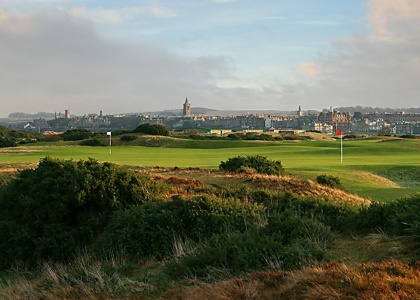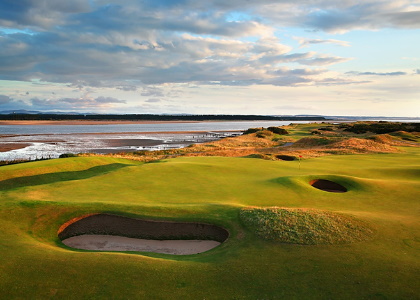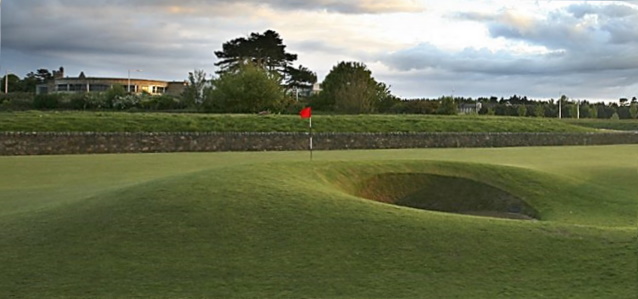The St Andrews Links Trust publish their ‘busy days’ with unavailable ‘block out times’. Tour operators consult this schedule. It definitely influences how overseas visitors in particular are managed. It needn’t be as simple as looking for the clearest week though. Everyone else is doing that too. It’s probably best to use the busy days diary as an elimination tool instead. Use it to avoid the elephant traps rather than pick a date.
It’s worth being alert to the fact that busy periods (those with block-out in the diary) can become subject to lower demand, and therefore less busy, as a consequence of being busy!
The best way to understand this dynamic is to think of it in terms of ratios rather than being a simple supply-side task of looking at the diary for the biggest gaps. If a certain day only has 5 tee-times available, but just 20 applications chasing them, that would represent a better prospect than a day which has 30 tee-times and 150 applications chasing them. It begins to make us think about human nature and how golfers will react to different information propositions

Massive double greens

"The shortest par 5 in Scotland!"

Don't go there. You'll be all day

Revised 'post Covid' strike rates. In broad terms, demand has nearly doubled and strike-rates nearly halved
Many golfer’s might have sat at home promising themselves that ‘one day I’ll … etc’. Covid seems to have focused a few minds to perhaps realise that ‘next year’ doesn’t have to happen and since Scotland reopened there has been a notable uptick in travelling golfers. The problem of course is that we can only fit X number of golfers onto Y number of tee-times each day. Supply is inelastic. We saw a broad doubling in the level of demand in 2022, but thought some of this was due to Covid rearrangements and the pressure from an Open Championship. The trend continued into 2023 however and 2024, and there doesn’t look to be any obvious tailing off yet for 2025 either. It’s getting harder to win ballots.
St Andrews ballot data isn’t easy to come by. We have to cobble various insights together. The month of the year performance broadly conforms with what we’d expect. Faraway Fairways aren’t the only GTO or commentator to put estimates into the public realm. If golfer’s begin to find these though and start making decisions accordingly then they might start to over-subscribe May and June. It would only take 100 parties each month to switch from July to June to flip the seasonal pattern. In the last 2 years we’ve enjoyed comparatively more success contesting July and August than we have May and June, which does make us wonder if something is starting to happen?
It’s worth being aware that the Old course closes from about mid September until the second week of October. There is normally another annual blocked-out week in early May which is best avoided. There is usually a week in June sees is St Andrews university graduation week (‘grad week’). Typically the university wins this annual encounter meaning there are fewer golfers in town. Less golfers means less competition in the ballot.


1st tee.
The day of the week is an important consideration. Every other tee-time on a Thursday afternoon and all-day Saturday, are normally reserved for balloted tee-times. These usually represent our best prospects and we try and keep them on-side. There is no play on Sunday as the course reverts to open public access. We try and schedule Carnoustie against this shadow.
The question you really want to know the answer to however is ‘how good are my chances?”. Drawing from our own experience, plus information we can source from partner or friendly organisations, we’ve laid out some indicative data below. It’s an estimate though, a guideline only. It can certainly be defied with bad luck so isn’t any kind of guarantee or promise
Faraway Fairways increasingly believe that your prospects can be enhanced by playing something we’ve come to call a ‘Goldilocks window’. A heavily blocked-out week is too cold, whereas a clear week can become too hot as it draws in everyone else. A Goldilocks window is tantamount to being ‘just right’. Human nature becomes part of the calculation therefore.
Let’s game it out: We have 100 golfers. Week ‘A’ and Week ‘B’ are both clear. With no reason to prefer one over the other, we expect a 50/50 split. Now let’s assume week ‘A’ has one day blocked out. Do we still expect to see 50/50? What ratio do we now expect? 90/20? We don’t know. We’re confident it isn’t 50/50 any more. What we ideally want is a week with enough block-out to deter without damaging our own prospects, surrounded by a week that is clear to draw competing interest